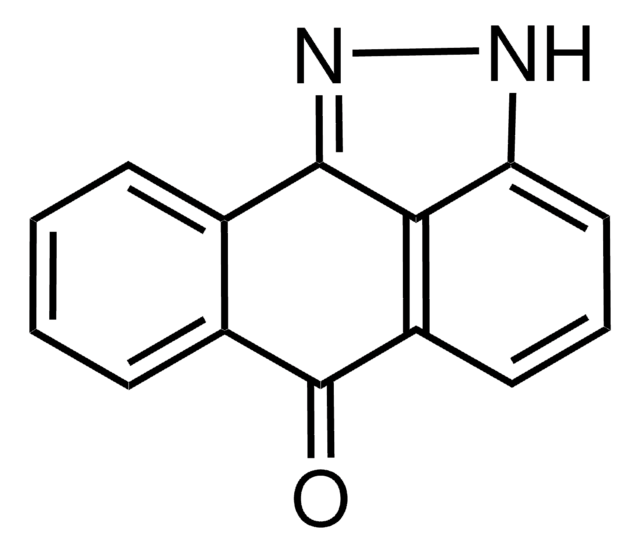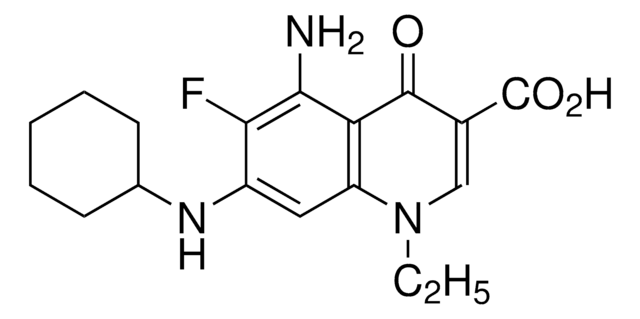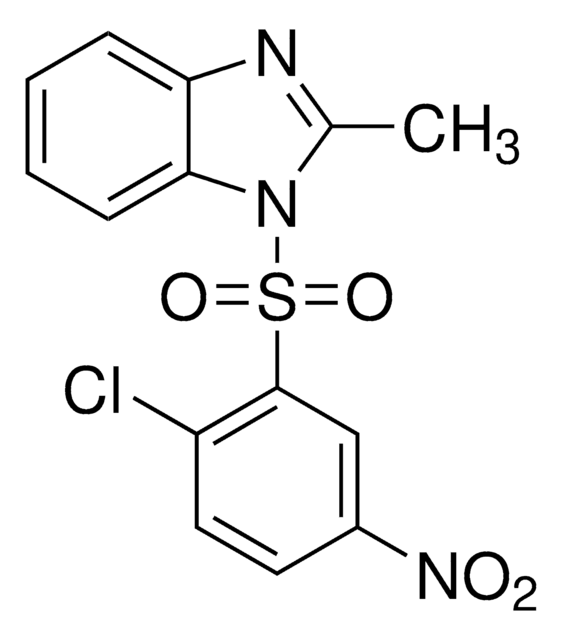SML0800
Rimonabant hydrochloride
≥98% (HPLC), powder, cannabinoid type-I receptor antagonist
Synonyme(s) :
5-(4-Chlorophenyl)-1-(2,4-dichlorophenyl)-4-methyl-N-1-piperidinyl-1H-pyrazole-3-carboxamide hydrochloride, SR-141716, SR-141716A, SR141716, SR141716A
About This Item
Produits recommandés
Nom du produit
Rimonabant hydrochloride, ≥98% (HPLC)
Essai
≥98% (HPLC)
Forme
powder
Conditions de stockage
desiccated
Couleur
white to beige
Solubilité
DMSO: 20 mg/mL, clear
Température de stockage
2-8°C
Chaîne SMILES
CC1=C(C2=CC=C(Cl)C=C2)N(C3=CC=C(Cl)C=C3Cl)N=C1C(NN4CCCCC4)=O.Cl
InChI
1S/C22H21Cl3N4O.ClH/c1-14-20(22(30)27-28-11-3-2-4-12-28)26-29(19-10-9-17(24)13-18(19)25)21(14)15-5-7-16(23)8-6-15;/h5-10,13H,2-4,11-12H2,1H3,(H,27,30);1H
Clé InChI
REOYOKXLUFHOBV-UHFFFAOYSA-N
Informations sur le gène
human ... CNR1(1268)
Application
- to study its effects on protein synthesis in C2C12 myotubes
- to analyze its effects on human astroglia
- in combination with methanandamide (mAEA) to study its effects on murine gastric vagal afferent mechanosensitivity
Actions biochimiques/physiologiques
Caractéristiques et avantages
Mention d'avertissement
Danger
Mentions de danger
Conseils de prudence
Classification des risques
Acute Tox. 3 Oral - Eye Irrit. 2
Code de la classe de stockage
6.1C - Combustible acute toxic Cat.3 / toxic compounds or compounds which causing chronic effects
Classe de danger pour l'eau (WGK)
WGK 3
Point d'éclair (°F)
Not applicable
Point d'éclair (°C)
Not applicable
Faites votre choix parmi les versions les plus récentes :
Déjà en possession de ce produit ?
Retrouvez la documentation relative aux produits que vous avez récemment achetés dans la Bibliothèque de documents.
Articles
Sigma-Aldrich offers many products related to cannabinoid receptors for your research needs.
Notre équipe de scientifiques dispose d'une expérience dans tous les secteurs de la recherche, notamment en sciences de la vie, science des matériaux, synthèse chimique, chromatographie, analyse et dans de nombreux autres domaines..
Contacter notre Service technique









